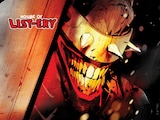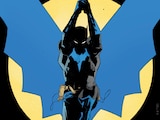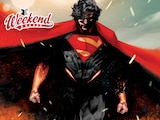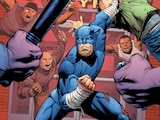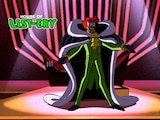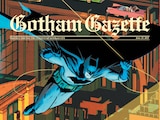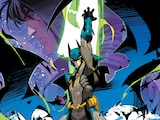When a mutant with limited cognitive function tells you that you need help, it’s time to look at yourself.
DC’s ongoing Batman series relaunched last week with a new issue #1 and there’s so much to unpack. This is only the fourth time we’ve had a Batman #1 since 1940, which is a pretty big deal. The creative team is everything I could’ve ever wanted. Matt Fraction writes an engaging and entertaining story and Jorge Jiménez accompanies it with some gorgeous artwork. Take a look at that splash page of Batman gliding over Gotham City, or the image of the Dark Knight getting ready for his encounter with Killer Croc. Jiménez’s artwork is cinematic.
Right off the bat (no pun intended), it’s clear that Fraction and Jiménez have something new to say about Batman and his longtime father figure. Yes, that’s right. Throughout the story, we see Bruce communicating with Alfred Pennyworth. Considering Alfred is deceased, the exact nature of this version of Bruce’s beloved butler isn’t entirely clear, but it appears to all be in Bruce’s head.

At first glance, the revelation seems rather sweet. Bruce misses Alfred, and I can’t blame him because we as readers miss him too. But I do question why Bruce is doing this now. If Bruce were going to start talking to a possibly imaginary Alfred, I would have expected it to be shortly after Alfred’s death in the 2019 “City of Bane” storyline.
However, as I read through the first issue, I realized Alfred was there because Bruce needs him now more than ever. You get the real sense that Bruce is facing a crisis of conscience at the start of this new Batman series. Killer Croc’s body has mutated, making him feral, and Batman doesn’t have any faith that Croc can be rehabilitated.
“Killer Croc hasn’t been Waylon Jones for a long time,” Batman says early on. “I try to keep them separate, in my mind. It’s easier that way when they inevitably disappoint you.”
When an Arkham doctor named Anna Zeller tells Batman that Croc has changed, the Dark Knight cynically replies, “People never change. Not really.”
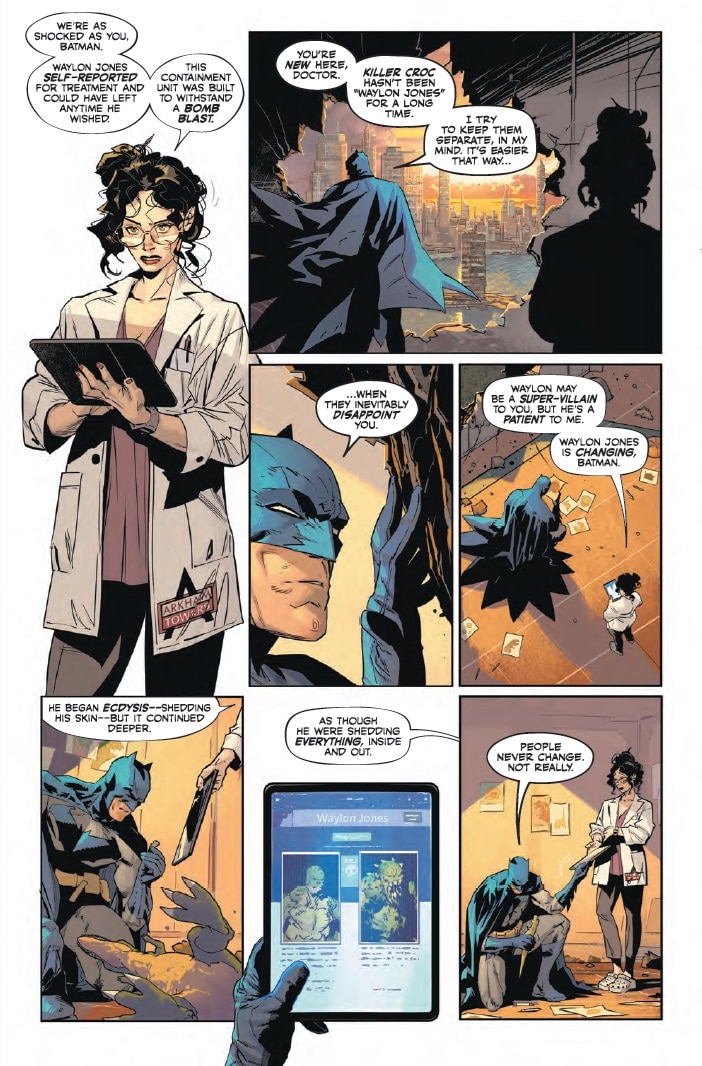
This doesn’t sound like the Batman who has spent years trying to rehabilitate some of his greatest villains. Batman has sponsored Harvey Dent’s plastic surgeries and let Clayface join his Knights Program during James Tynion IV’s Detective Comics run. His characterization here raised an eyebrow, until I realized how much sense it made.
Simply put, a lot of things have happened to shake Batman’s faith recently. Last year’s Absolute Power storyline saw Amanda Waller bring the DC Universe to its knees as she did some heinous things to immobilize the superhero community. Earlier this year, Bruce learned that his new girlfriend was working with a criminal who was killing street children. More recently, Jeph Loeb and Jim Lee’s “H2SH” has Batman fighting against Batgirl and Red Hood while his childhood friend Tommy Elliot orchestrates things behind the scenes. When you add all that together, it’s little wonder Batman’s optimism in humanity is fading.
In a weird way, this ties in with James Gunn and David Corenswet’s Superman film. During the film, Lois tells Superman, “You trust everyone and think everyone you've ever met is, like, beautiful,” to which Superman replies, “Maybe that’s the real punk rock.”
Right now, Batman doesn’t seem to be feeling punk rock at all.
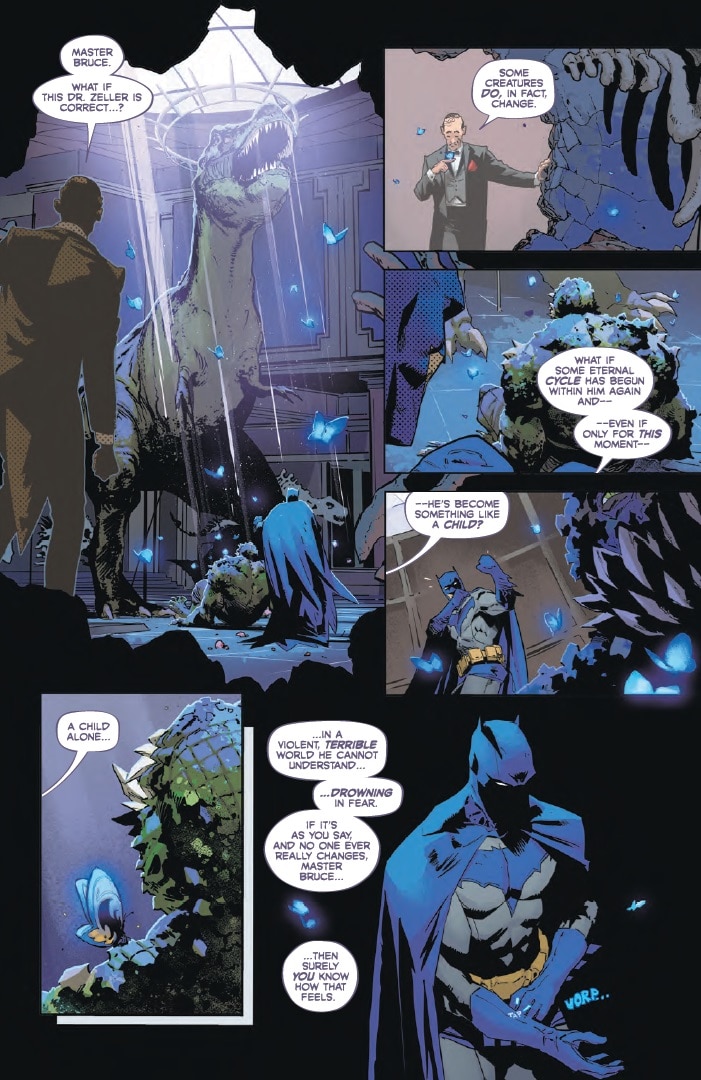
And that’s why he’s communicating with this version of Alfred. On some level, the Dark Knight is aware that he’s losing his compassion, so his mind has created this version of Alfred to act as a sort of (thankfully non-singing) Jiminy Cricket. Batman still has Nightwing, Batgirl, Robin and all his other allies, but none of them challenge and make him question himself like Alfred did.
This is demonstrated when Batman confronts Killer Croc. The Dark Knight is ready to give Croc a beating, but Alfred reminds him that Waylon needs a helping hand, not violence. it leads to one of the best scenes of the issue, as Batman takes off his mask and talks Killer Croc through his problems.
This is significant, because not only is Batman endangering his secret identity, but he’s leaving his head unprotected if Croc should attack. However, Batman is choosing to put his life on the line to help someone in need, even if they’re a villain.
Alfred pushed Batman to approach Killer Croc with compassion, but it’s important to remember that Alfred very likely exists only in Bruce’s head. Alfred’s ideas are really coming from within Batman. That tells me that Bruce knows he’s losing his way, and he’s using this Alfred to center him.
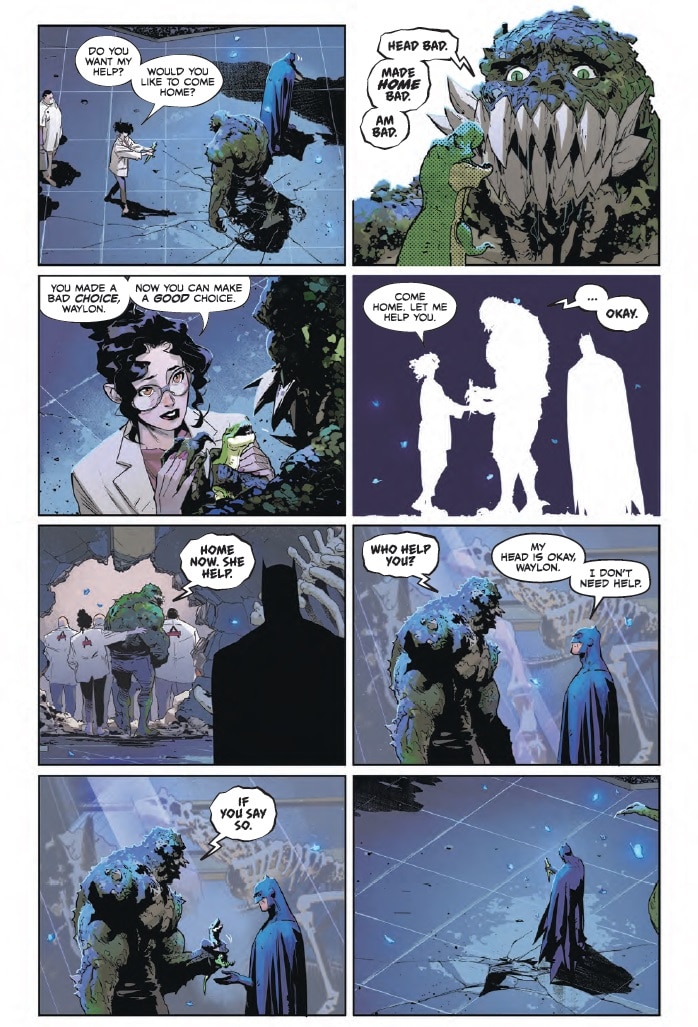
Killer Croc’s mind has become more primal and infantile He’s barely able to form a sentence, but even he can sense that there’s something wrong with Batman.
“My head is okay, Waylon,” Batman tells Croc. “I don’t need help.”
“If you say so,” Croc replies.
The moment with Batman comforting Croc reminds me of the Batman: The Animated Series episode “Baby Doll” and the Justice League Unlimited episode “Epilogue.” Both episodes had emotional scenes like this where Batman comforts his villains. All of which says, at least to this Batman fan, that Fraction and Jiménez have a grasp on who the character is at his core, and the book is in good hands.
Batman #1 by Matt Fraction, Jorge Jiménez and Tomeu Morey is now available in print and as a digital comic book.
Joshua Lapin-Bertone writes about TV, movies and comics for DC.com, is a regular contributor to the Couch Club and writes our monthly Batman column, "Gotham Gazette." Follow him on Bluesky at @joshualapinbertone and on X at @TBUJosh.
NOTE: The views and opinions expressed in this feature are solely those of Joshua Lapin-Bertone and do not necessarily reflect those of DC or Warner Bros. Discovery, nor should they be read as confirmation or denial of future DC plans.





